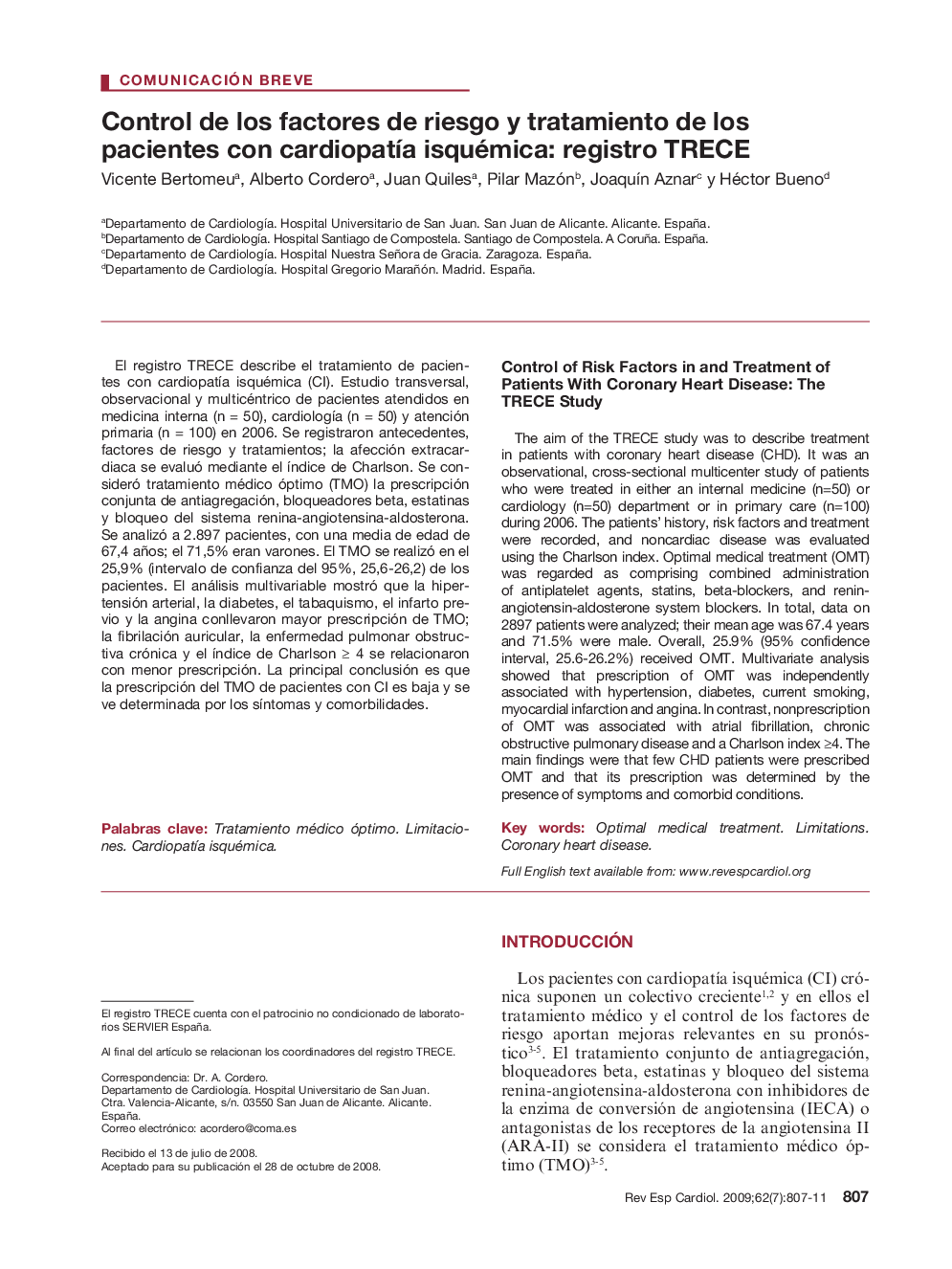| کد مقاله | کد نشریه | سال انتشار | مقاله انگلیسی | نسخه تمام متن |
|---|---|---|---|---|
| 3013633 | 1181860 | 2009 | 5 صفحه PDF | دانلود رایگان |

El registro TRECE describe el tratamiento de pacientes con cardiopatía isquémica (CI). Estudio transversal, observacional y multicéntrico de pacientes atendidos en medicina interna (n = 50), cardiología (n = 50) y atención primaria (n = 100) en 2006. Se registraron antecedentes, factores de riesgo y tratamientos; la afección extracardiaca se evaluó mediante el índice de Charlson. Se consideró tratamiento médico óptimo (TMO) la prescripción conjunta de antiagregación, bloqueadores beta, estatinas y bloqueo del sistema renina-angiotensina-aldosterona. Se analizó a 2.897 pacientes, con una media de edad de 67,4 años; el 71,5% eran varones. El TMO se realizó en el 25,9% (intervalo de confianza del 95%, 25,6-26,2) de los pacientes. El análisis multivariable mostró que la hipertensión arterial, la diabetes, el tabaquismo, el infarto previo y la angina conllevaron mayor prescripción de TMO; la fibrilación auricular, la enfermedad pulmonar obstructiva crónica y el índice de Charlson ≥ 4 se relacionaron con menor prescripción. La principal conclusión es que la prescripción del TMO de pacientes con CI es baja y se ve determinada por los síntomas y comorbilidades.
The aim of the TRECE study was to describe treatment in patients with coronary heart disease (CHD). It was an observational, cross-sectional multicenter study of patients who were treated in either an internal medicine (n=50) or cardiology (n=50) department or in primary care (n=100) during 2006. The patients’ history, risk factors and treatment were recorded, and noncardiac disease was evaluated using the Charlson index. Optimal medical treatment (OMT) was regarded as comprising combined administration of antiplatelet agents, statins, beta-blockers, and reninangiotensin- aldosterone system blockers. In total, data on 2897 patients were analyzed; their mean age was 67.4 years and 71.5% were male. Overall, 25.9% (95% confidence interval, 25.6-26.2%) received OMT. Multivariate analysis showed that prescription of OMT was independently associated with hypertension, diabetes, current smoking, myocardial infarction and angina. In contrast, nonprescription of OMT was associated with atrial fibrillation, chronic obstructive pulmonary disease and a Charlson index ≥4. The main findings were that few CHD patients were prescribed OMT and that its prescription was determined by the presence of symptoms and comorbid conditions.
Journal: Revista Española de Cardiología - Volume 62, Issue 7, July 2009, Pages 807–811